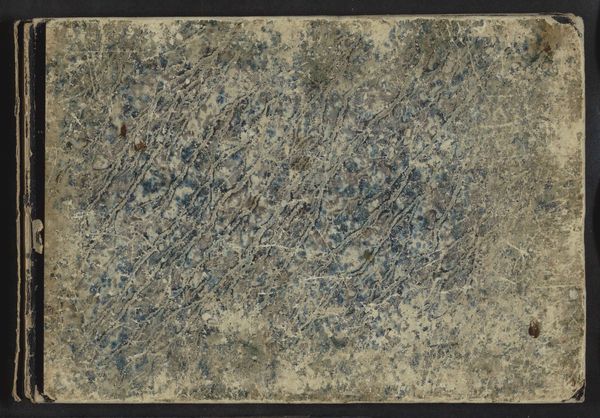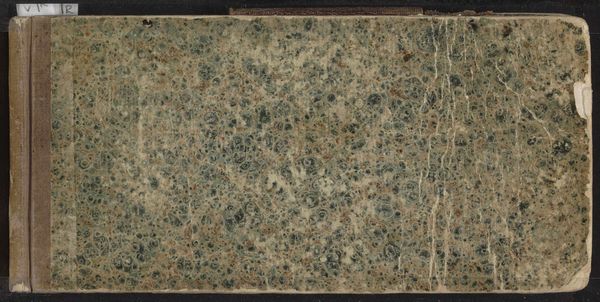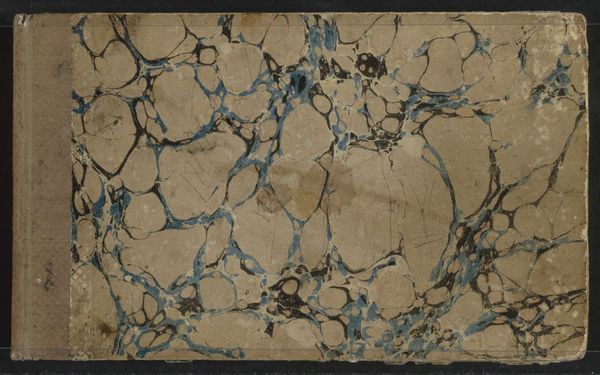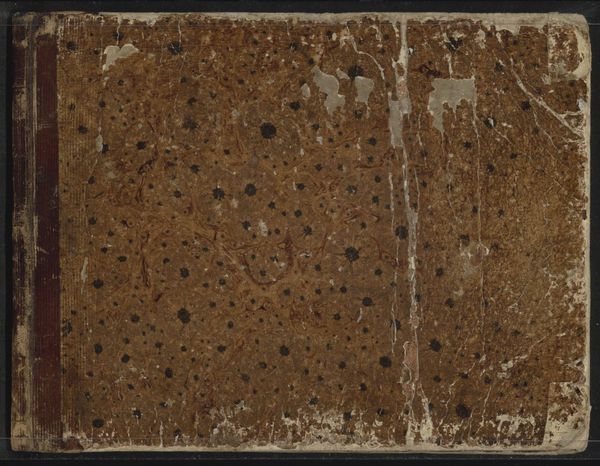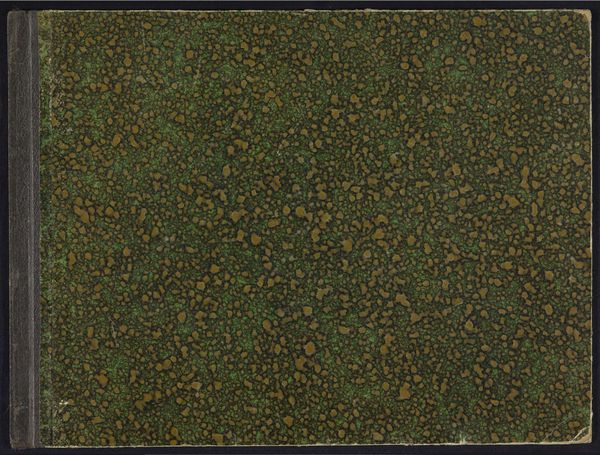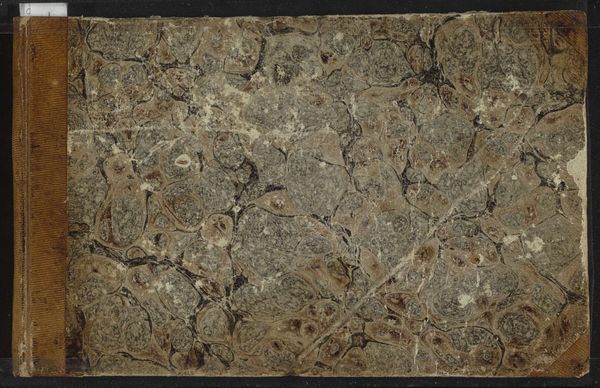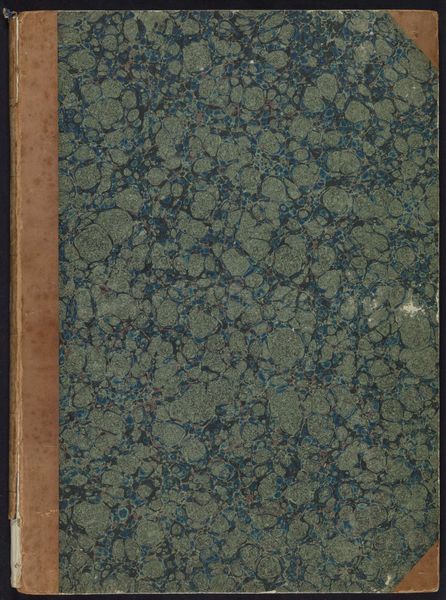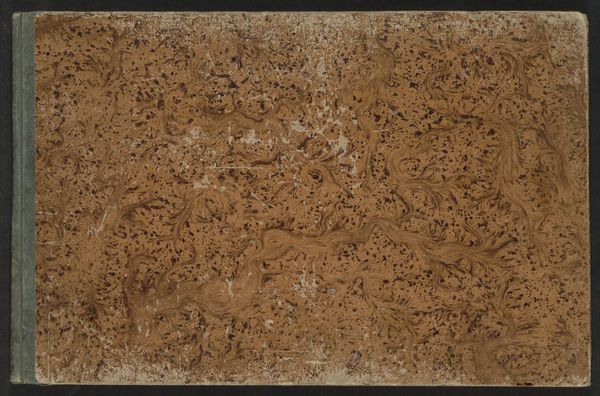
drawing, print
#
drawing
#
natural stone pattern
#
naturalistic pattern
#
baroque
# print
#
landscape
#
geometric pattern
#
subtle pattern
#
abstract pattern
#
minimal pattern
#
organic pattern
#
repetition of pattern
#
pattern repetition
#
layered pattern
Dimensions: height 368 mm, width 464 mm, thickness 12 mm, width 922 mm
Copyright: Rijks Museum: Open Domain
Editor: Here we have "Album met voorstellingen van Romeinse tuinen," made before 1683 by Giovanni Battista Falda, a collection of drawings and prints housed here at the Rijksmuseum. What I find striking is the cover itself—it’s this almost marbled effect in shades of green and blue. It gives me the feeling of a stormy sea or ancient stone. What can you tell me about the materiality of this object? Curator: I'm drawn to the materiality as well. This isn’t just a protective layer, but an active participant in the artwork itself. Considering the probable production of the marbled paper – likely using methods involving inks and a specialized trough – it immediately connects us to the craftsmanship of the period. Notice how the patterns on the cover evoke nature, subtly mirroring the garden scenes within? It challenges our modern perception of what constitutes 'art' versus 'craft,' especially when considering the labor involved in producing such a seemingly decorative element. Editor: So, you're saying the cover isn’t merely a container, but integral to the artwork's message? Is it commenting on the relationship between the constructed artifice of the gardens inside and natural processes? Curator: Precisely. Think of the social context, too. Such an album would likely have been commissioned or purchased by someone of considerable means. The marbling, while decorative, speaks to a consumption of labor and resources. The printmaking processes inside required specific tools, studios, distribution networks... the whole package really allows us to understand what defined 'high' art at the time. It challenges that definition too. Editor: That’s fascinating; I’d never thought about the economics and labor literally bound into the artwork like that! I appreciate seeing it in this new light. Curator: Exactly, by focusing on the material processes and consumption, we reveal the complex interplay between art, labor, and society in 17th-century Rome. This seemingly decorative cover becomes a vital part of understanding the entire piece.
Comments
No comments
Be the first to comment and join the conversation on the ultimate creative platform.

